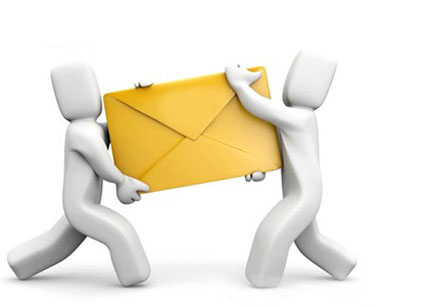 One of the most time consuming parts of a freelance writing job is the emailing. I do freelance writing on the weekends, and I find that the constant emailing back and forth sometimes takes me almost as long as writing the actual article. The emailing back and forth isn’t even the most strenuous part—it is the emails that get ignored that really kill me. When an email gets ignored I have to email the editor again for a follow-up, then check to see if the message ever sent, then again for another follow up, and then I take a month break or so and try that editor again before giving up for good. In other words, I have found that while most professionals want to see an empty inbox, freelance writers want to see it full of answers.
One of the most time consuming parts of a freelance writing job is the emailing. I do freelance writing on the weekends, and I find that the constant emailing back and forth sometimes takes me almost as long as writing the actual article. The emailing back and forth isn’t even the most strenuous part—it is the emails that get ignored that really kill me. When an email gets ignored I have to email the editor again for a follow-up, then check to see if the message ever sent, then again for another follow up, and then I take a month break or so and try that editor again before giving up for good. In other words, I have found that while most professionals want to see an empty inbox, freelance writers want to see it full of answers.
Crafting an email quite obviously depends upon who will be receiving the email; however there are a few tricks you can use to get an answer quicker than usual. Before getting frustrated that a few of your articles are still floating around the work of email, try using these tips:
How to Get Your Emails Answered
1. Subject Line – You absolutely want to have an engaging subject line. This may seem obvious, but many freelance writers type something generic in the subject line to stay simple. However, the key is to be descriptive and try and grab the attention of the person on the other end. Let them know exactly who you are and why you’re writing. Subject lines such as “Guest Post” or “Question” are the easiest to ignore.
2. Meaningful Content – Your emails are more likely to get answered if your content is concise and to the point. You want to be as thorough as necessary so as not to confuse your readers, but in general the rule of thumb is the shorter the better. Avoid asking a bunch of questions (at least in your initial email), and do not ramble on about information that is not necessary.
3. Call to Action – Be up front about what it is you want from the person. Many suggest putting this in the subject line, but at the very least put it in the first paragraph. Do you want the person to post your article by next week? Tell them. Do you want someone to make edits on your business proposal in the next two weeks? Tell them. Reminding them at the end of the email may also help you get that answer you’re hoping for.
4. Revise – One trick I use when sending out emails is this: I always type in the “To:” section last. This way you will make sure that you proofread your email before sending. After all, sometimes computers malfunction and you wouldn’t want an unedited email going out to an editor.
5. Respond – Once you get your first email answered, it is important that you do the same when it comes to a response. Often times the second email is the one that editors ignore, so it is important to remain persistent and let them know that you really care. If you can respond to emails in a timely fashion, editors will be more likely to do the same in return.
If you’re a freelance writer struggling with unresponsive recipients, you’re not alone. This is typical of many editors unfortunately, so do not take someone ignoring you personally. If you’re hoping to guest post on a website, chances are lots of other freelance writers are trying to do the same. This makes the job of an editor very hectic, but you can help by following a few of the tips listed above. Do any freelance writers or editors have advice that works for them? I’d love to hear your thoughts in the comments below! Good luck!
Amanda DiSilvestro gives small business and entrepreneurs SEO advice ranging from Google Analytics How-To’s to AdWords best practices. She works as a ghost writer and freelancer at amandadisilvestro.com and Coastal SEO Consulting, and works as the Marketing Manager for a Travel Company, Discover Corps, full-time. Visit her website to learn more!
Photo Credit: ontheroadtoqueendom.blogspot.com, pageprogressive.com, weblog.scanyours.com

Leave a Reply